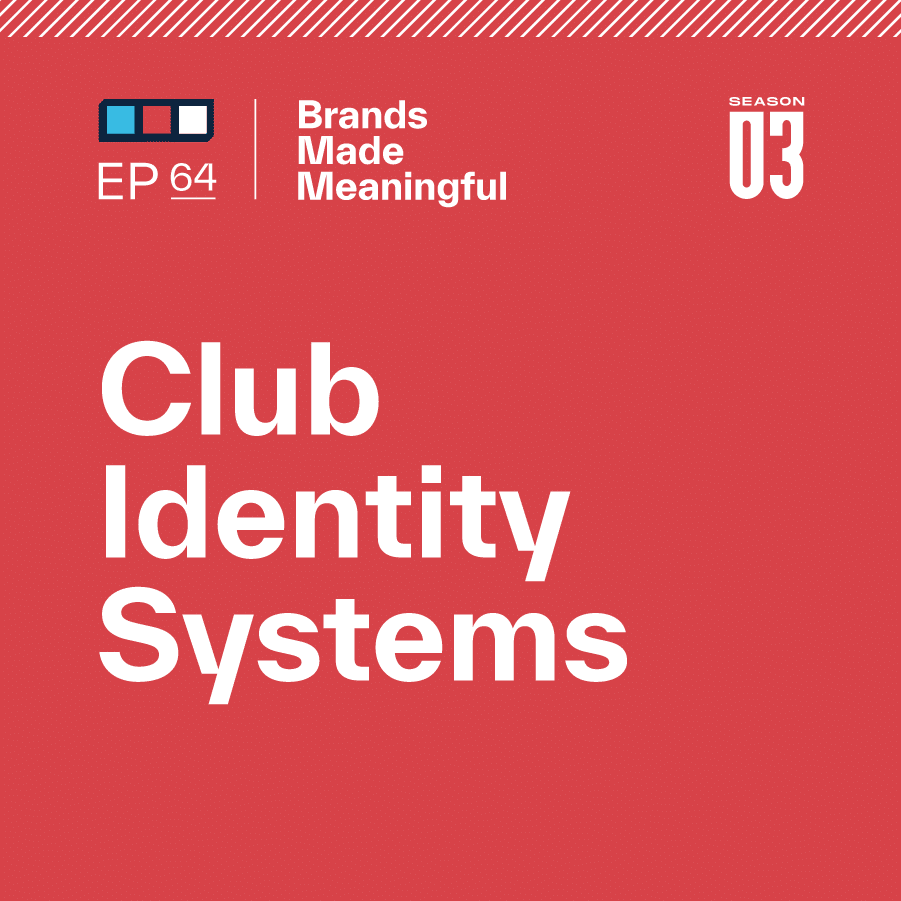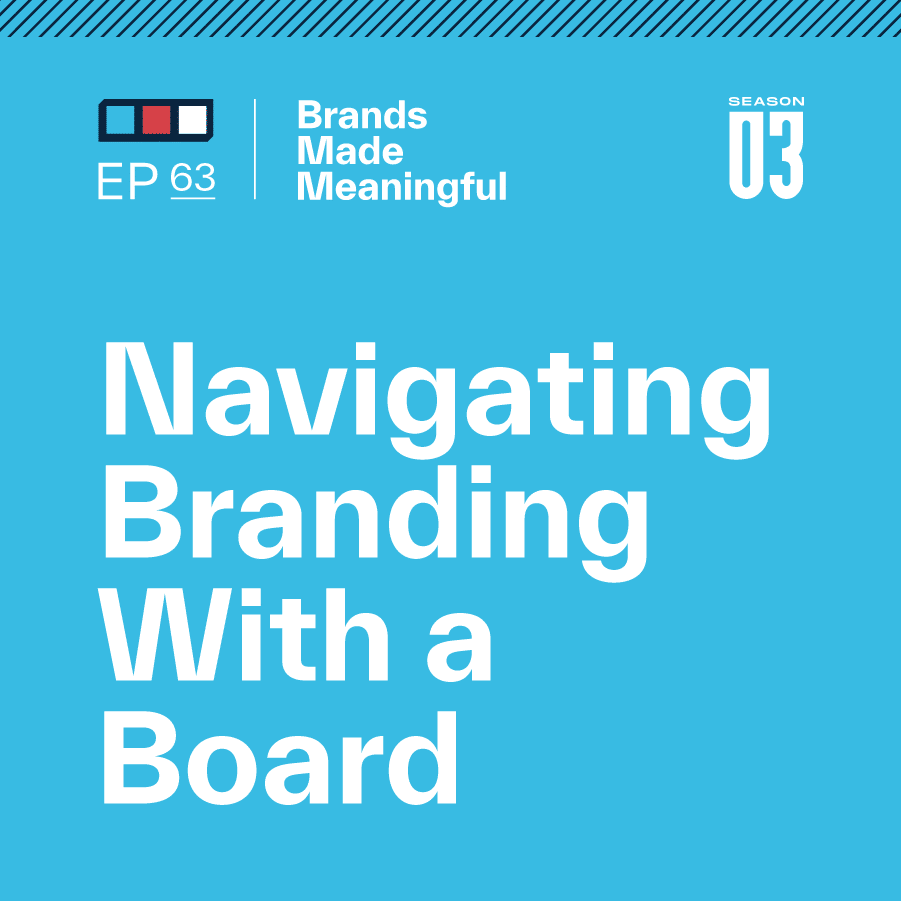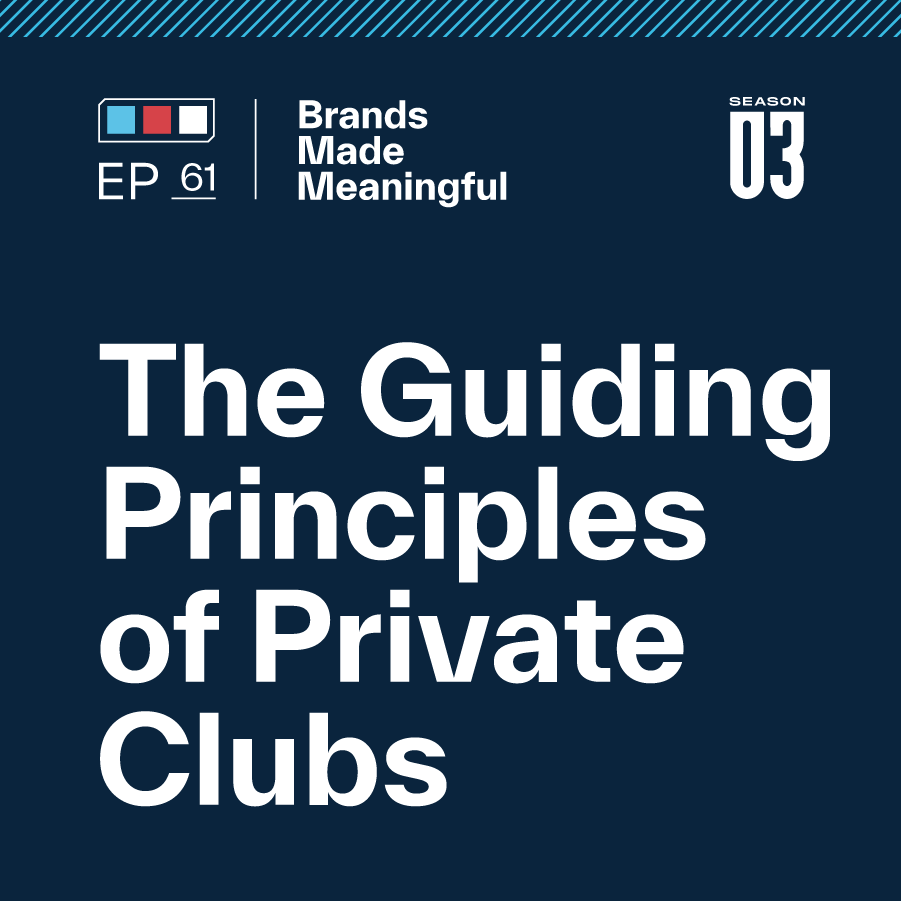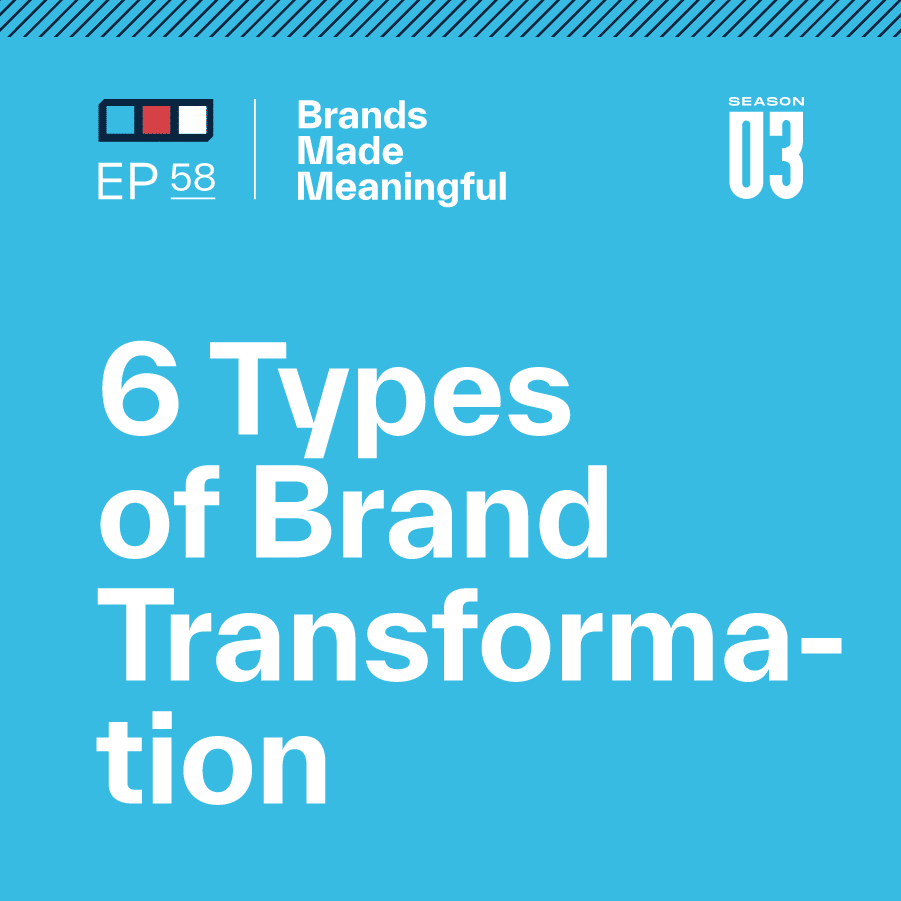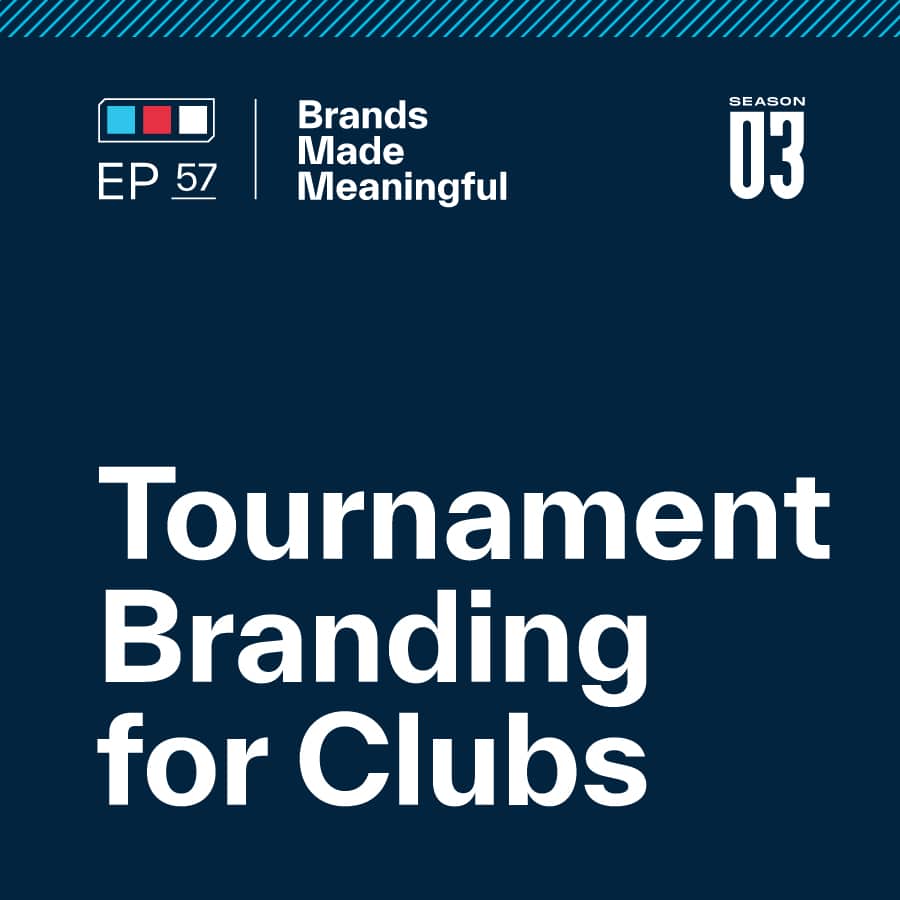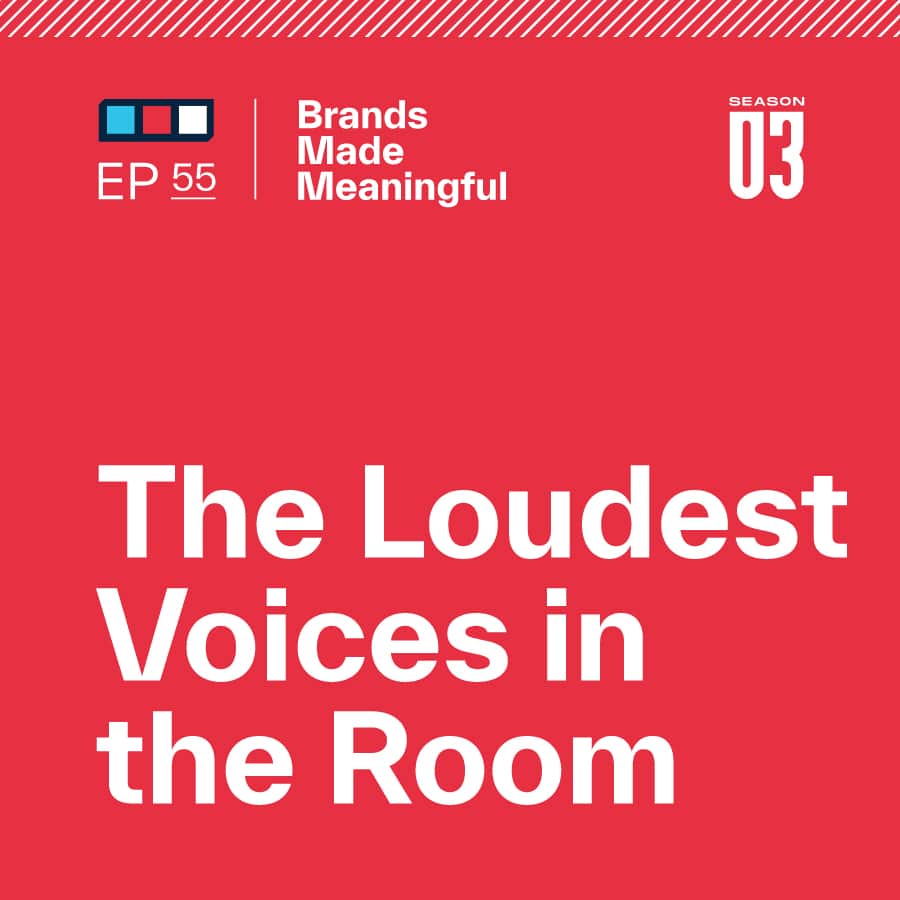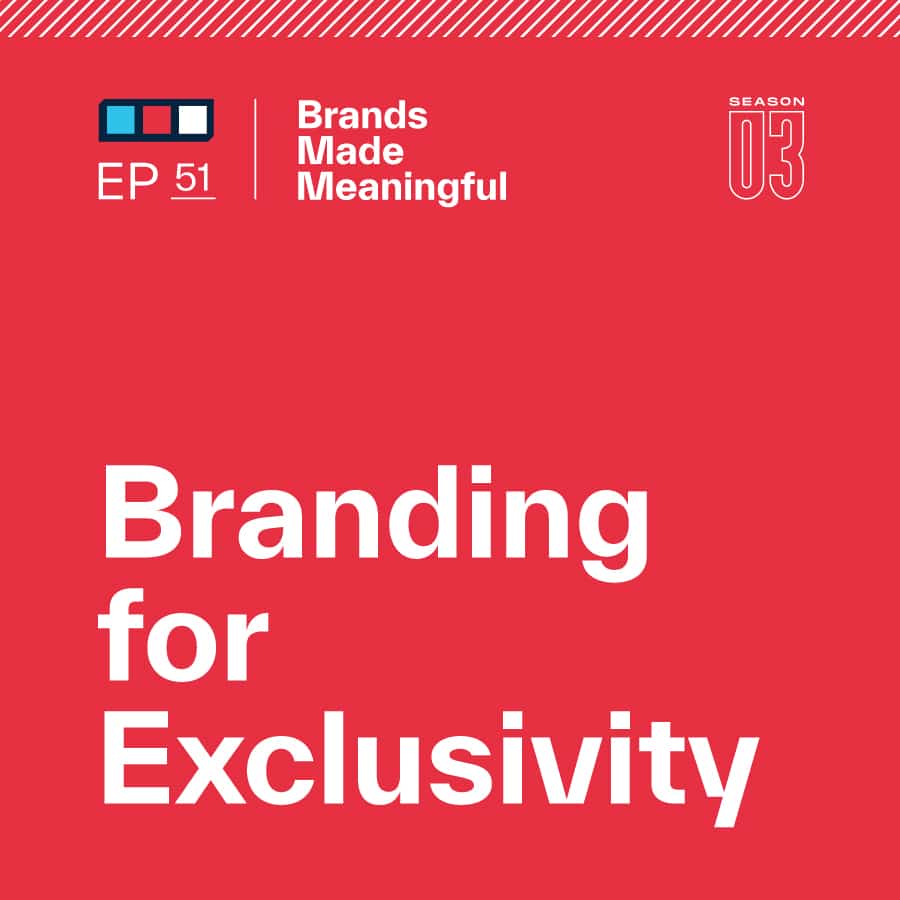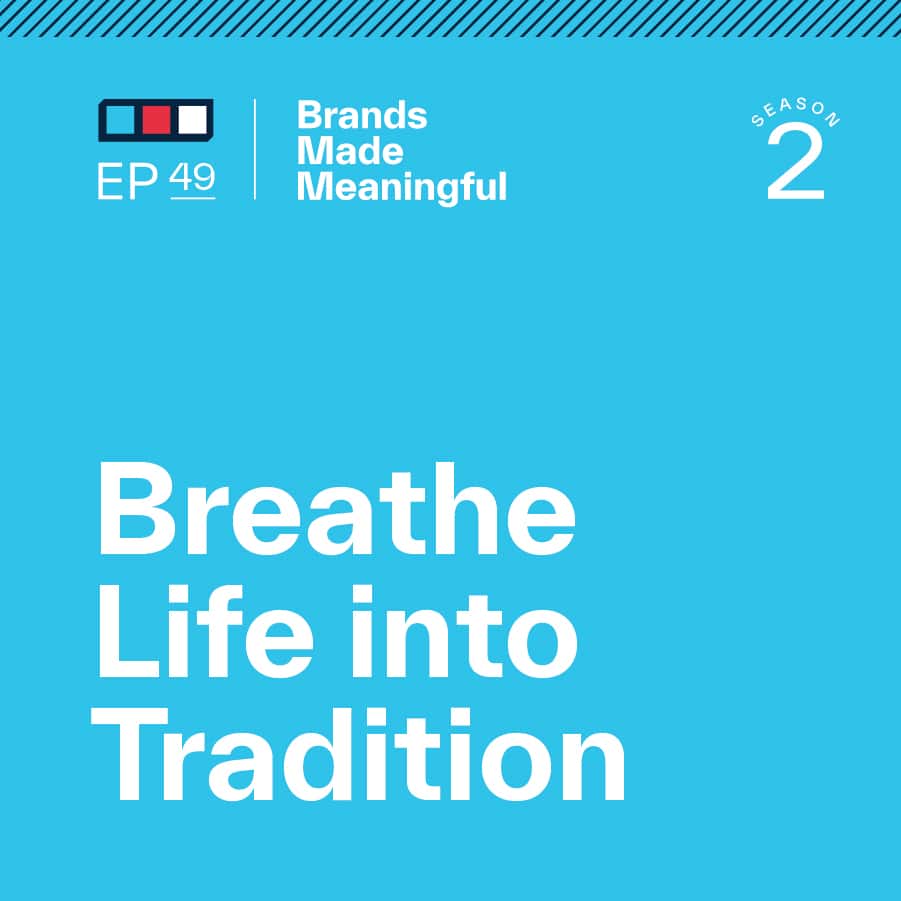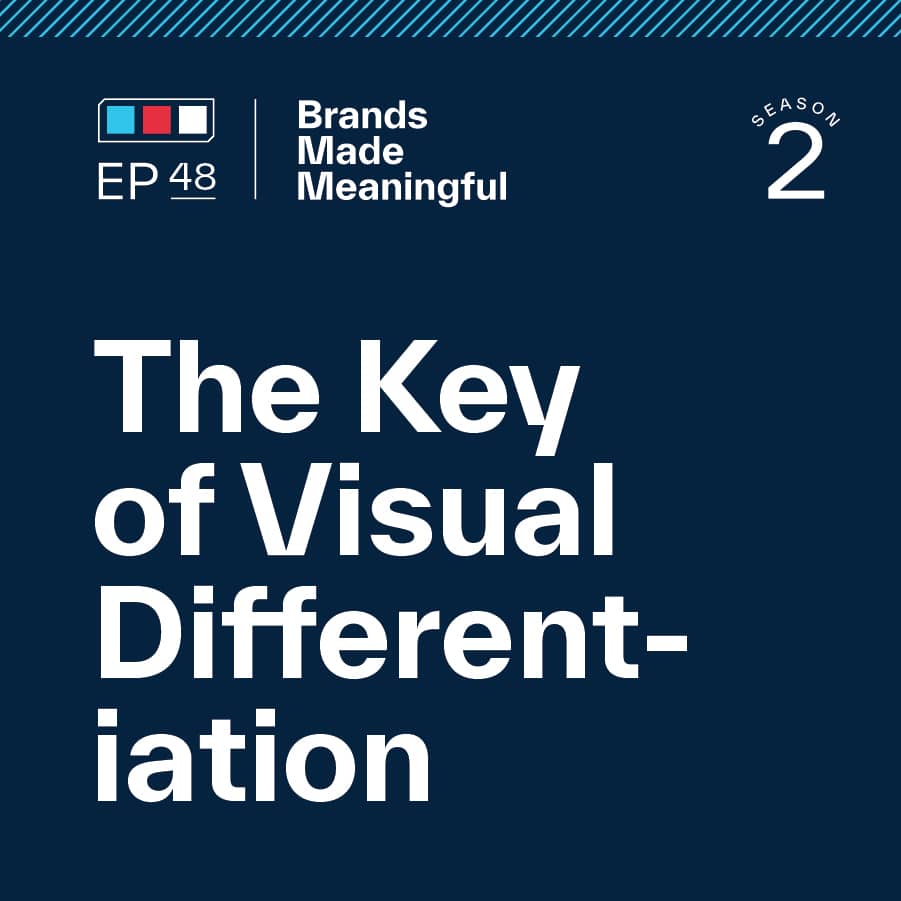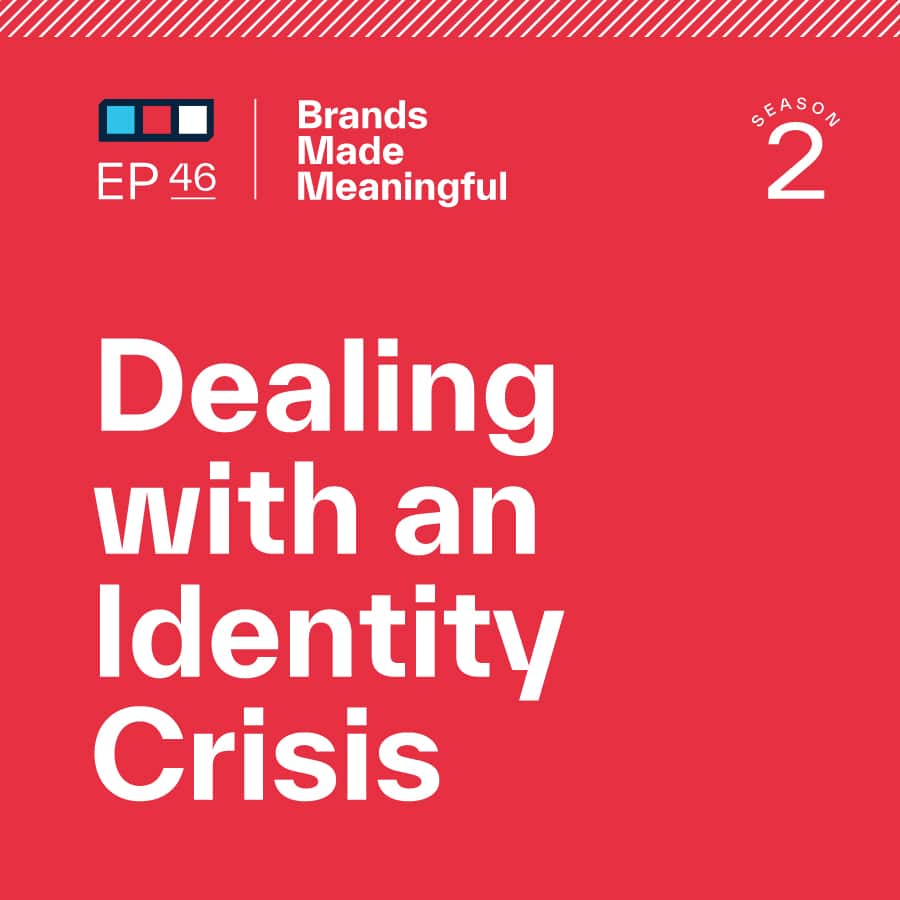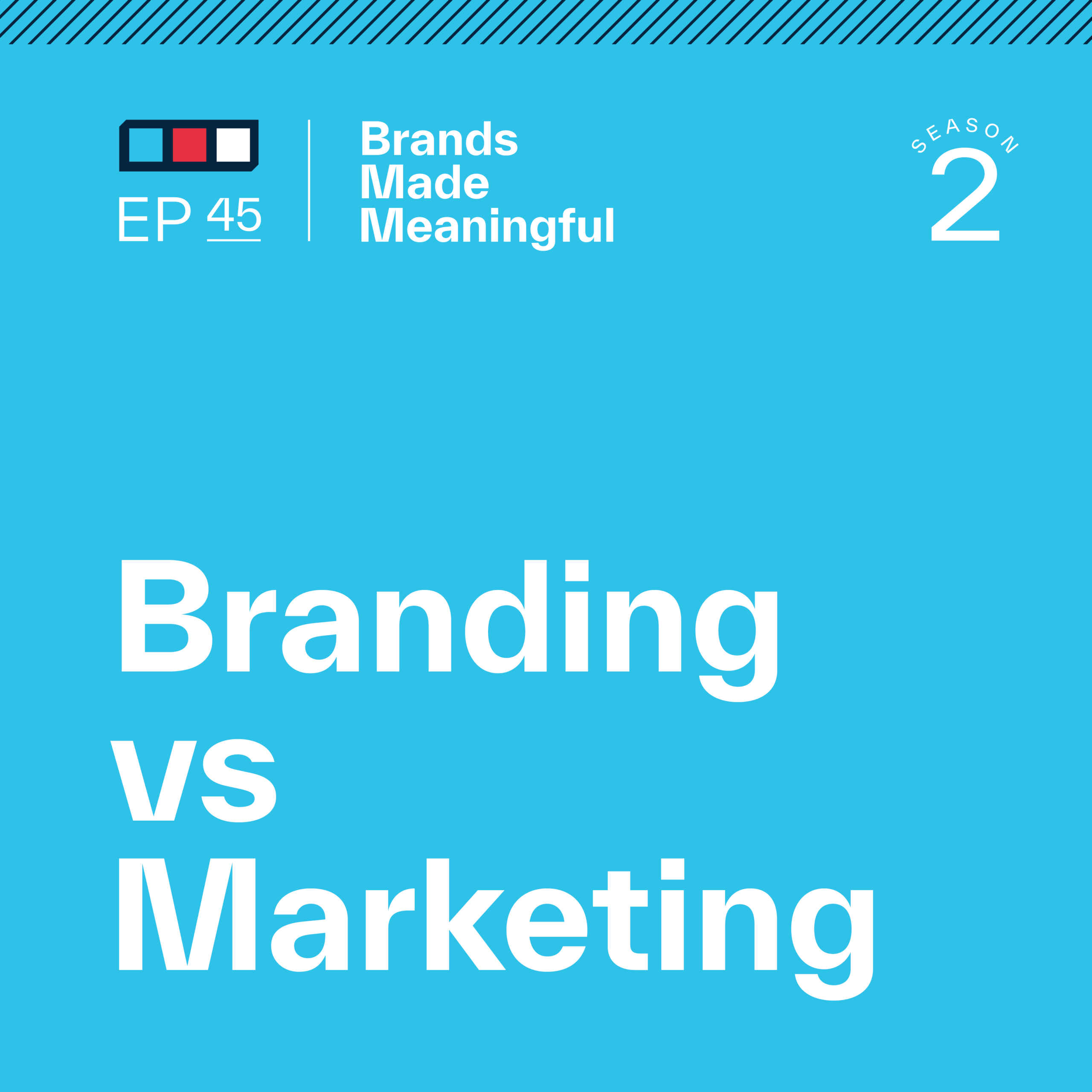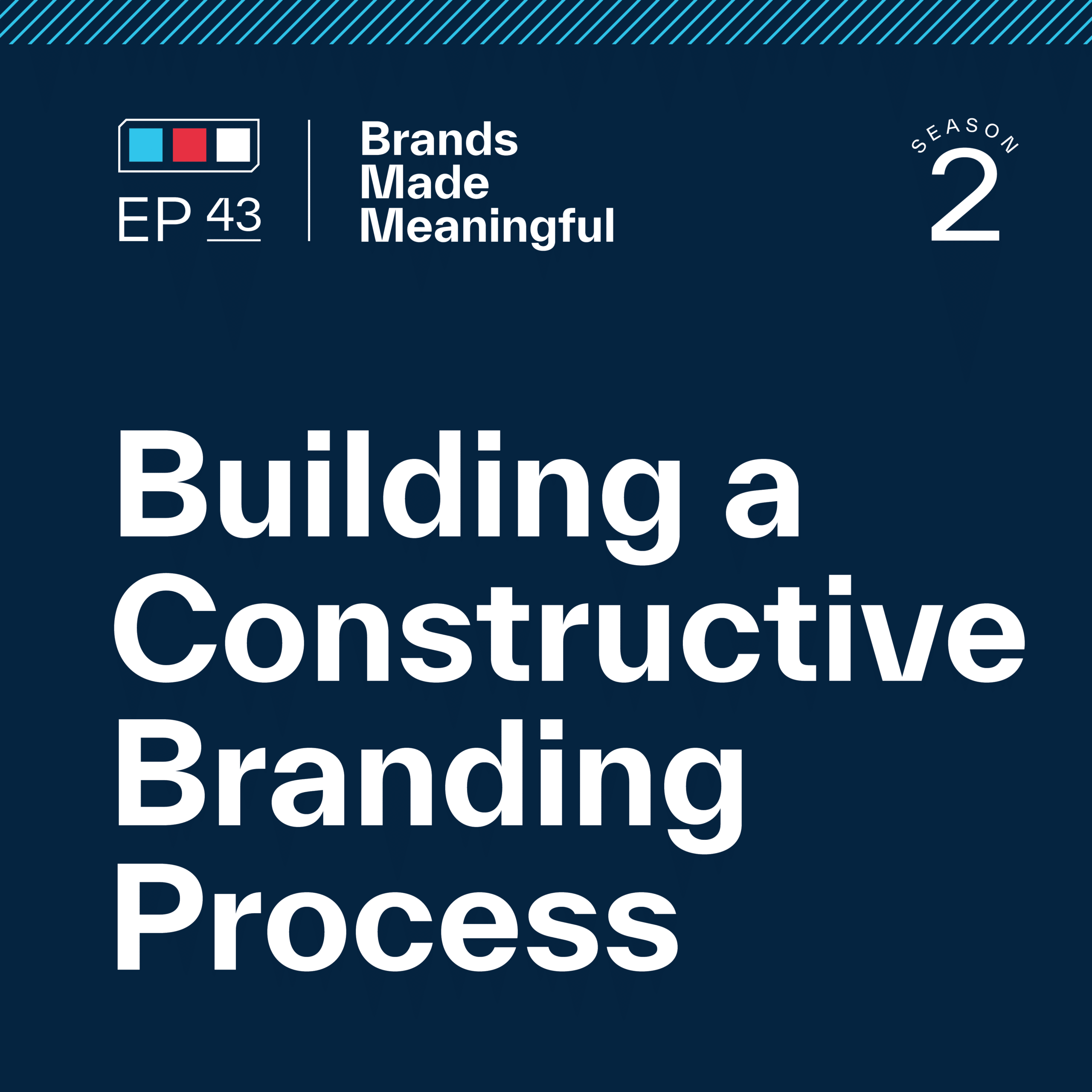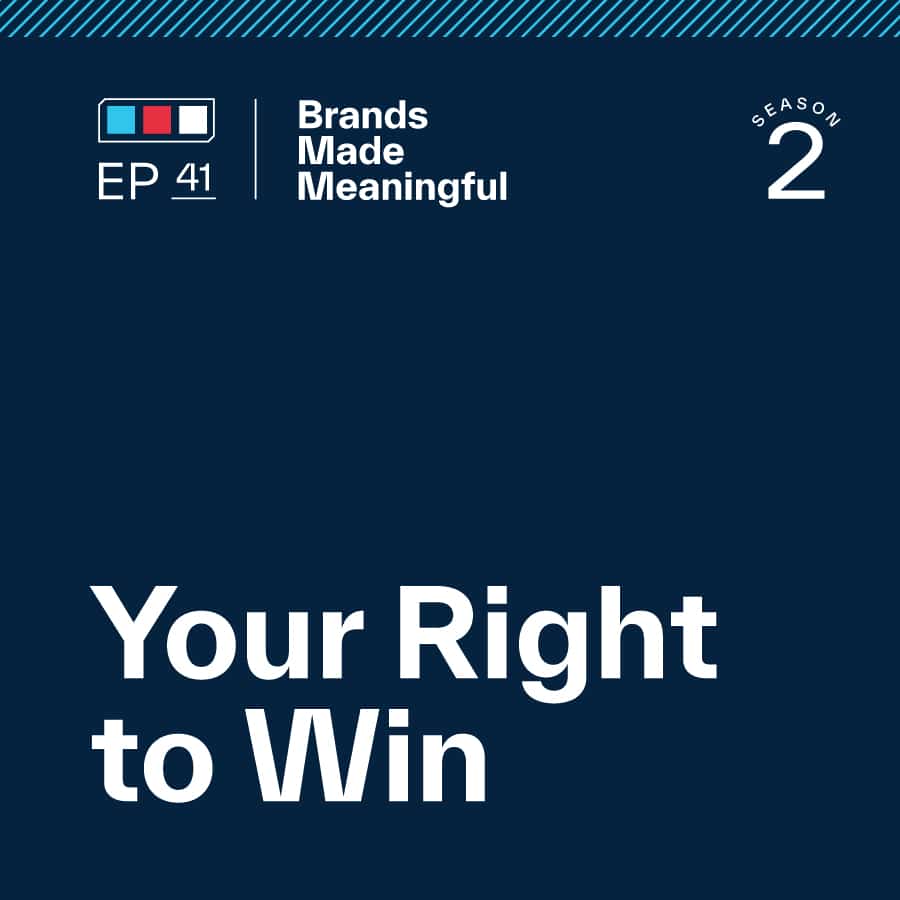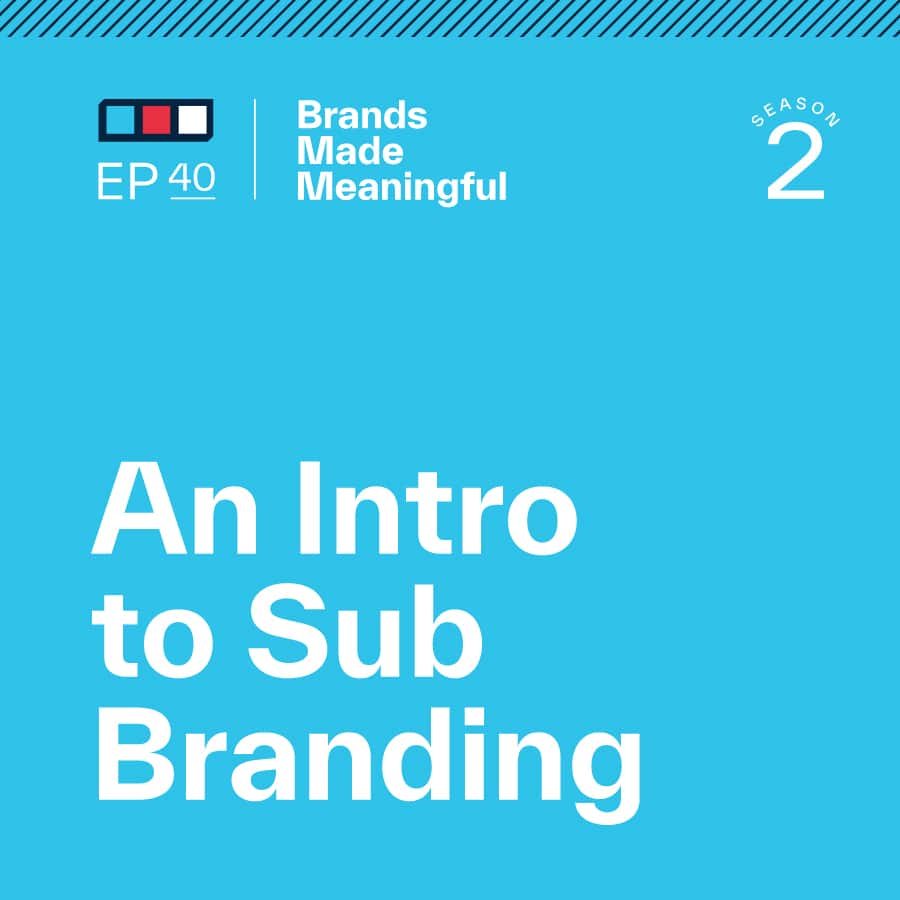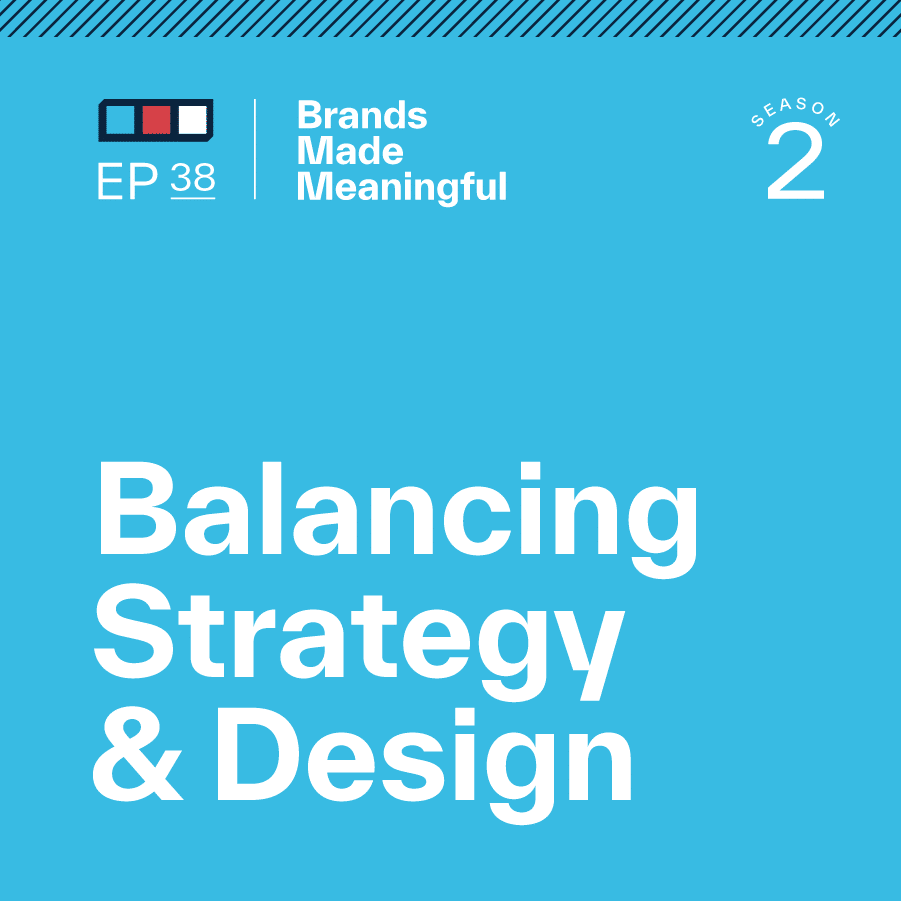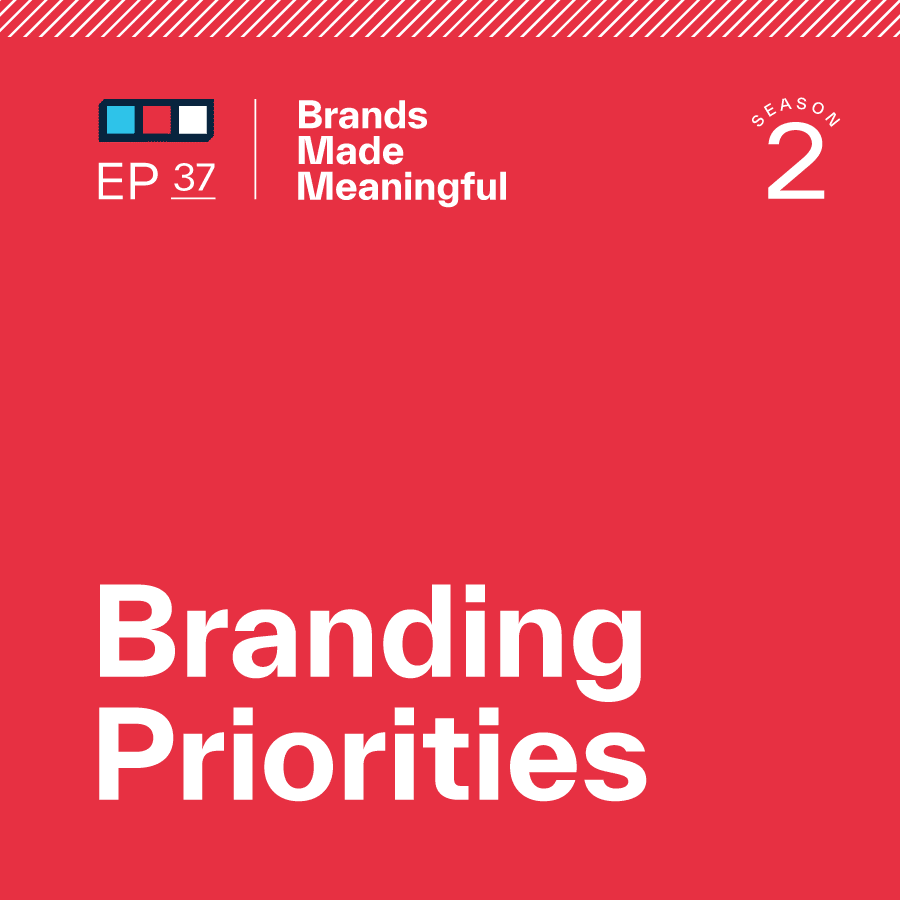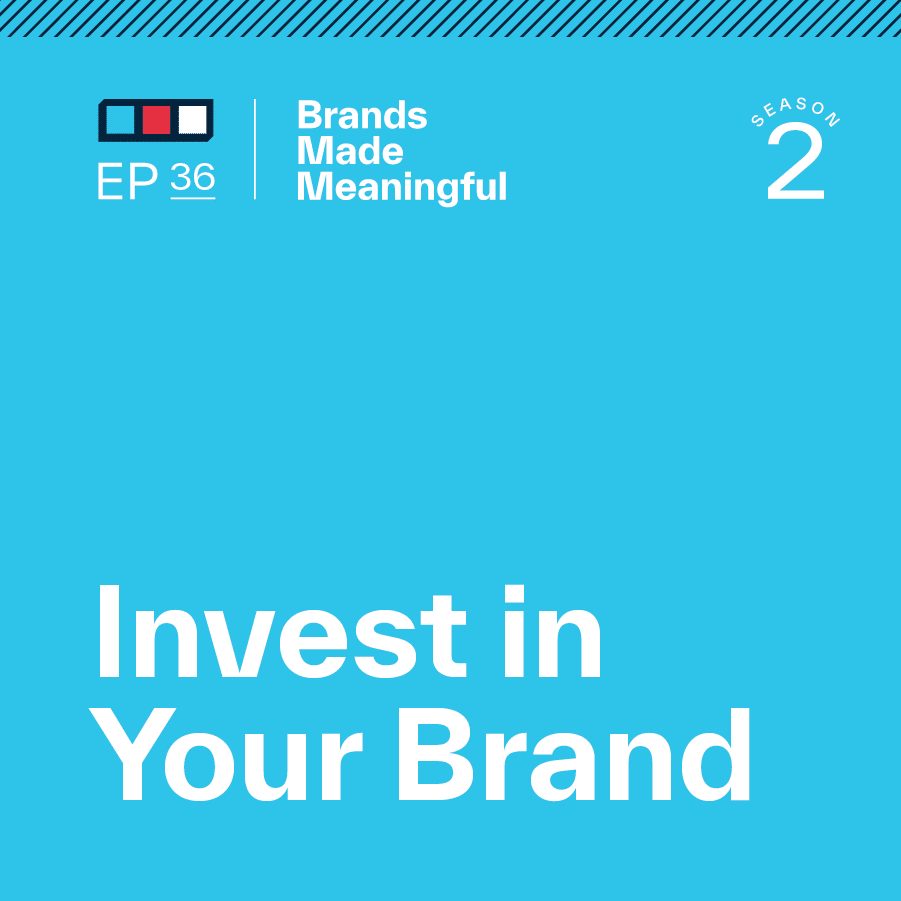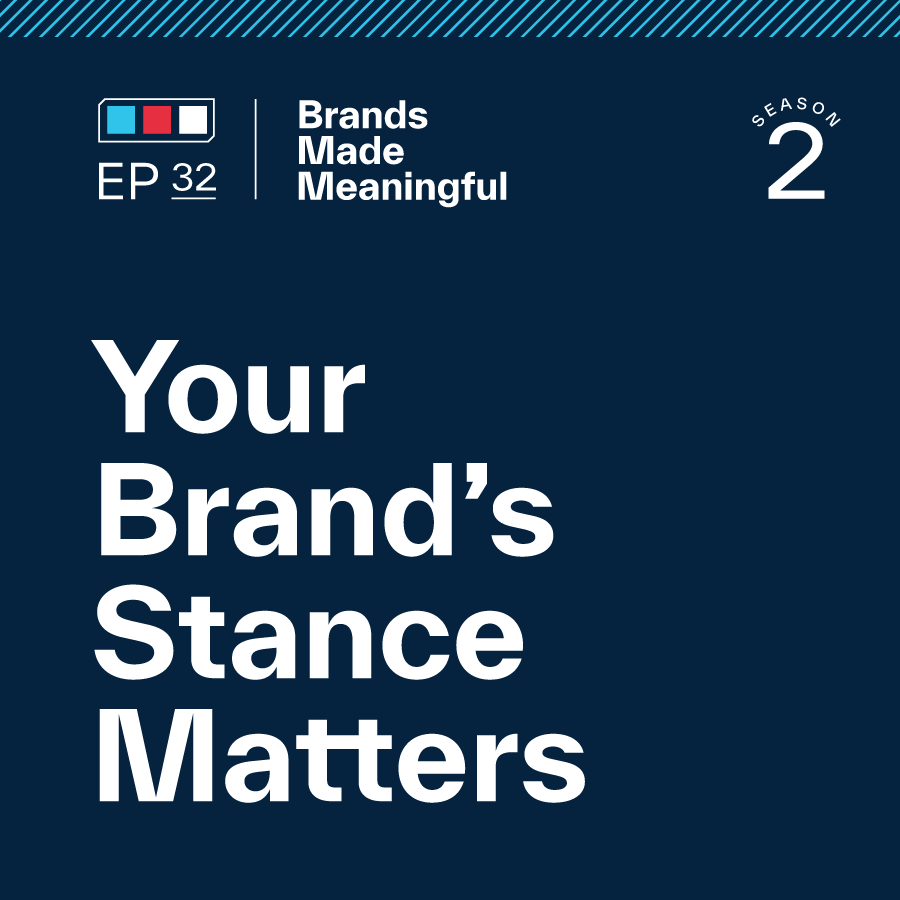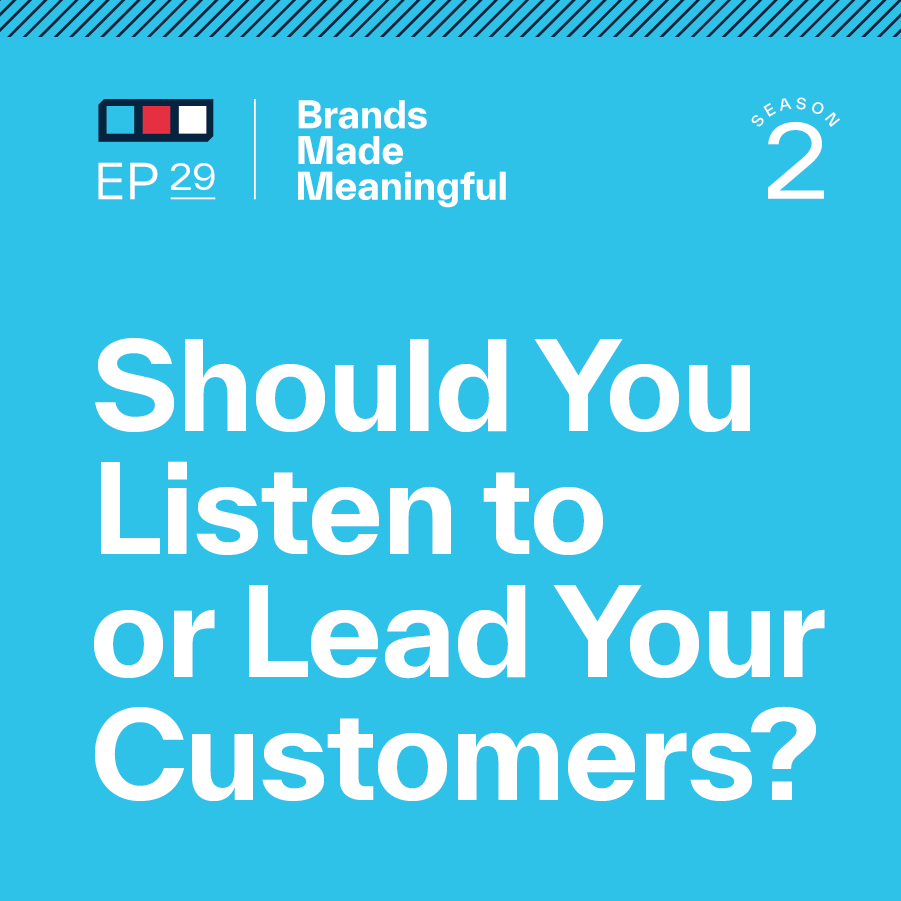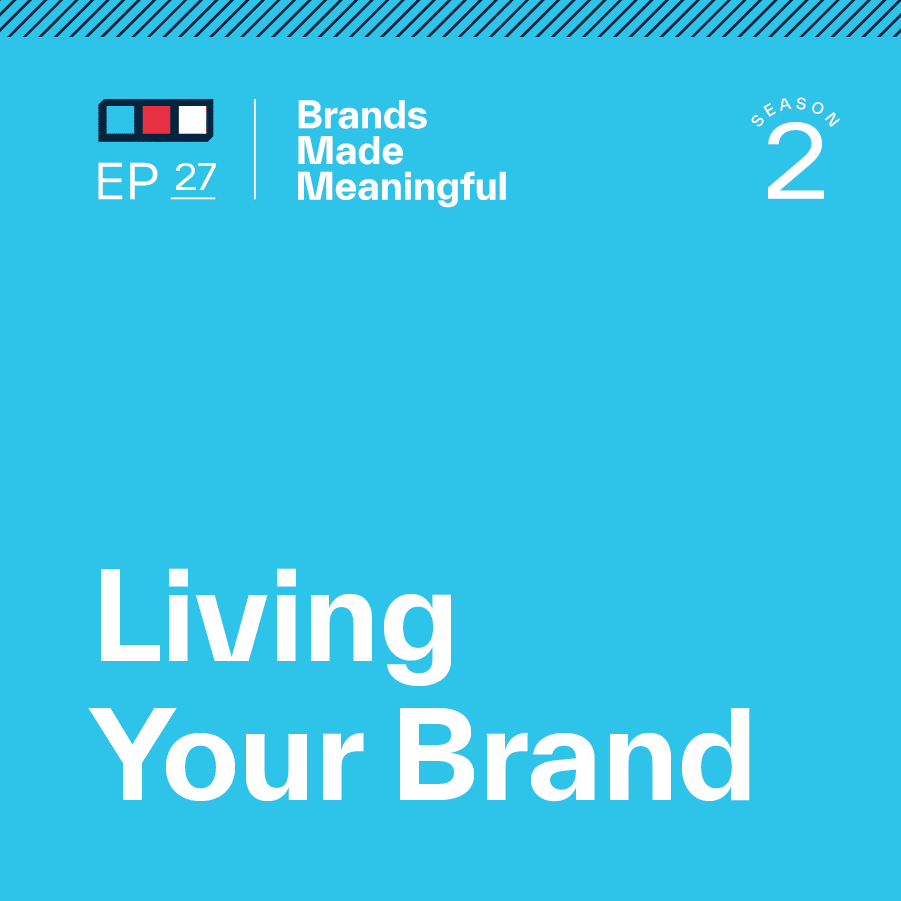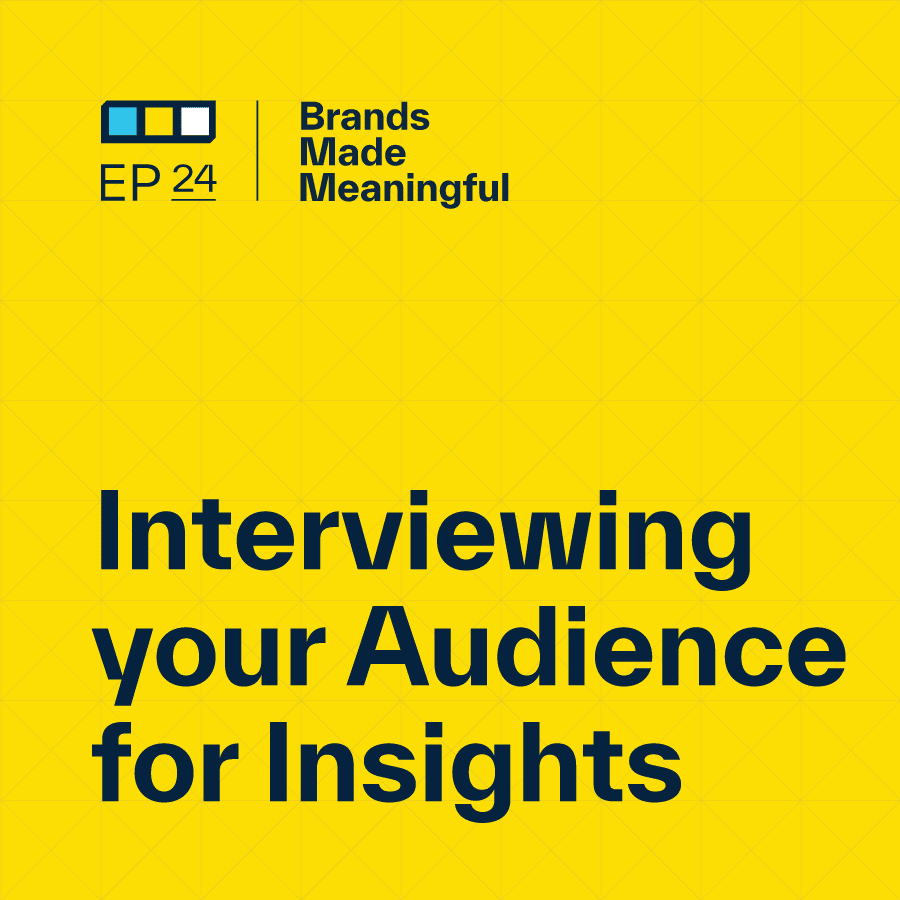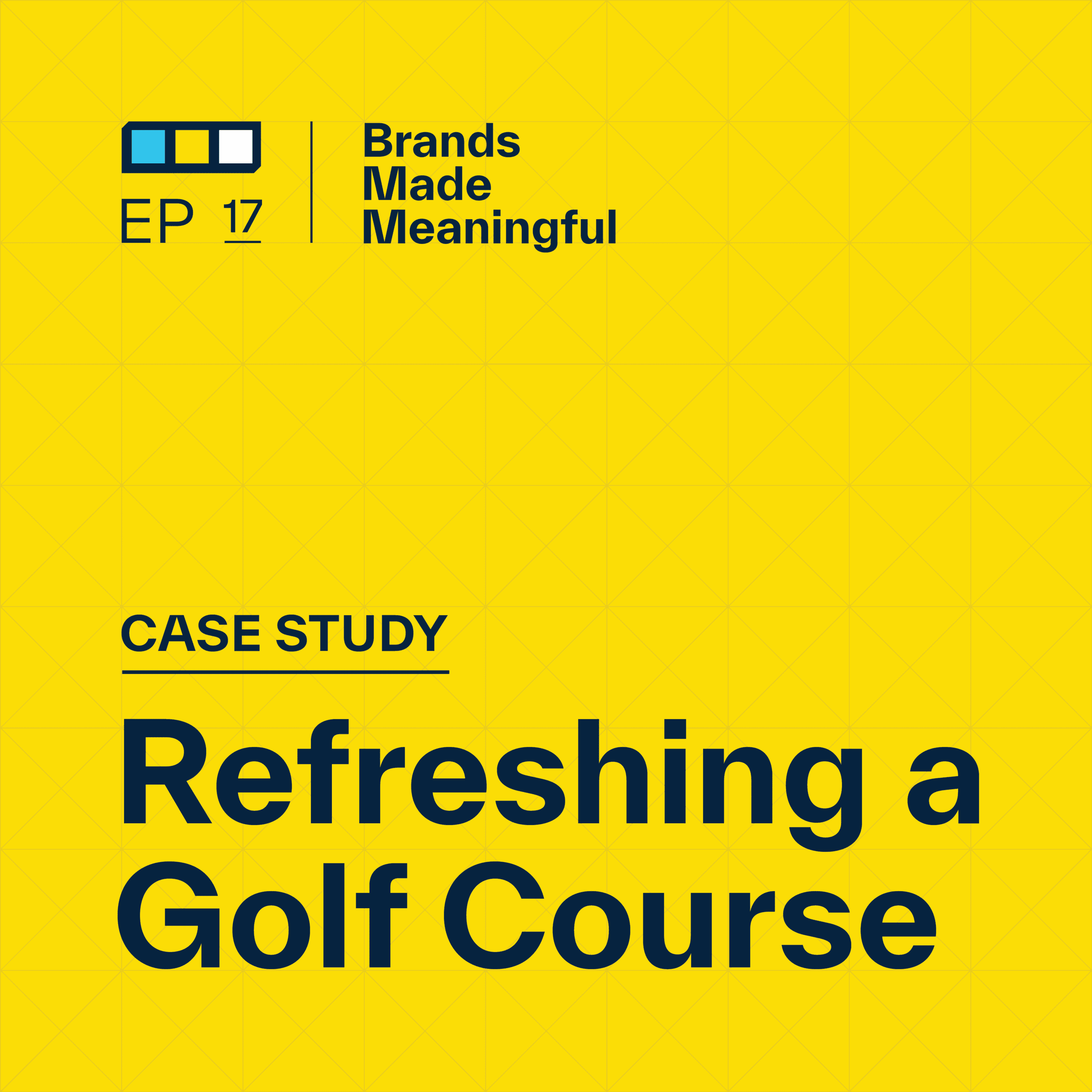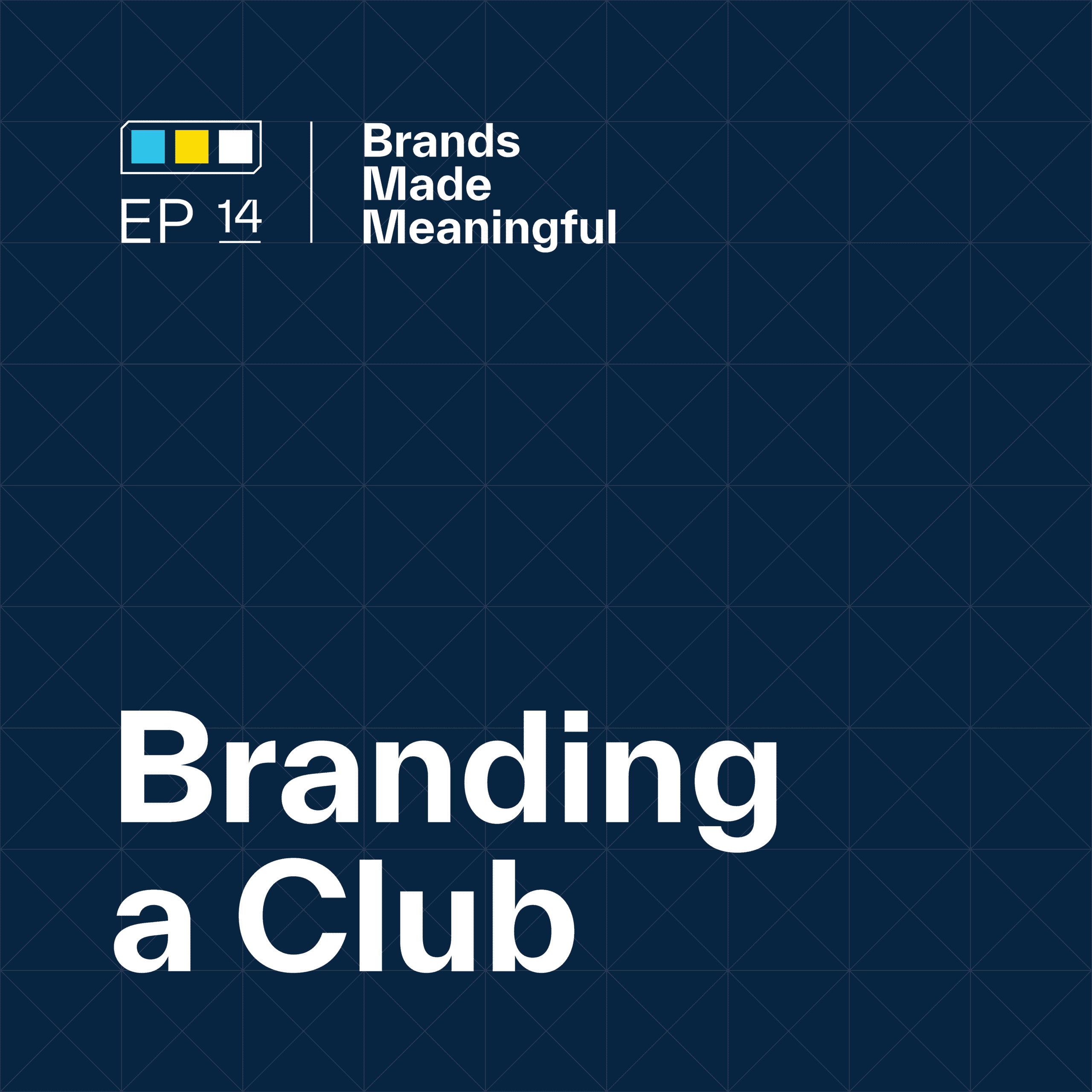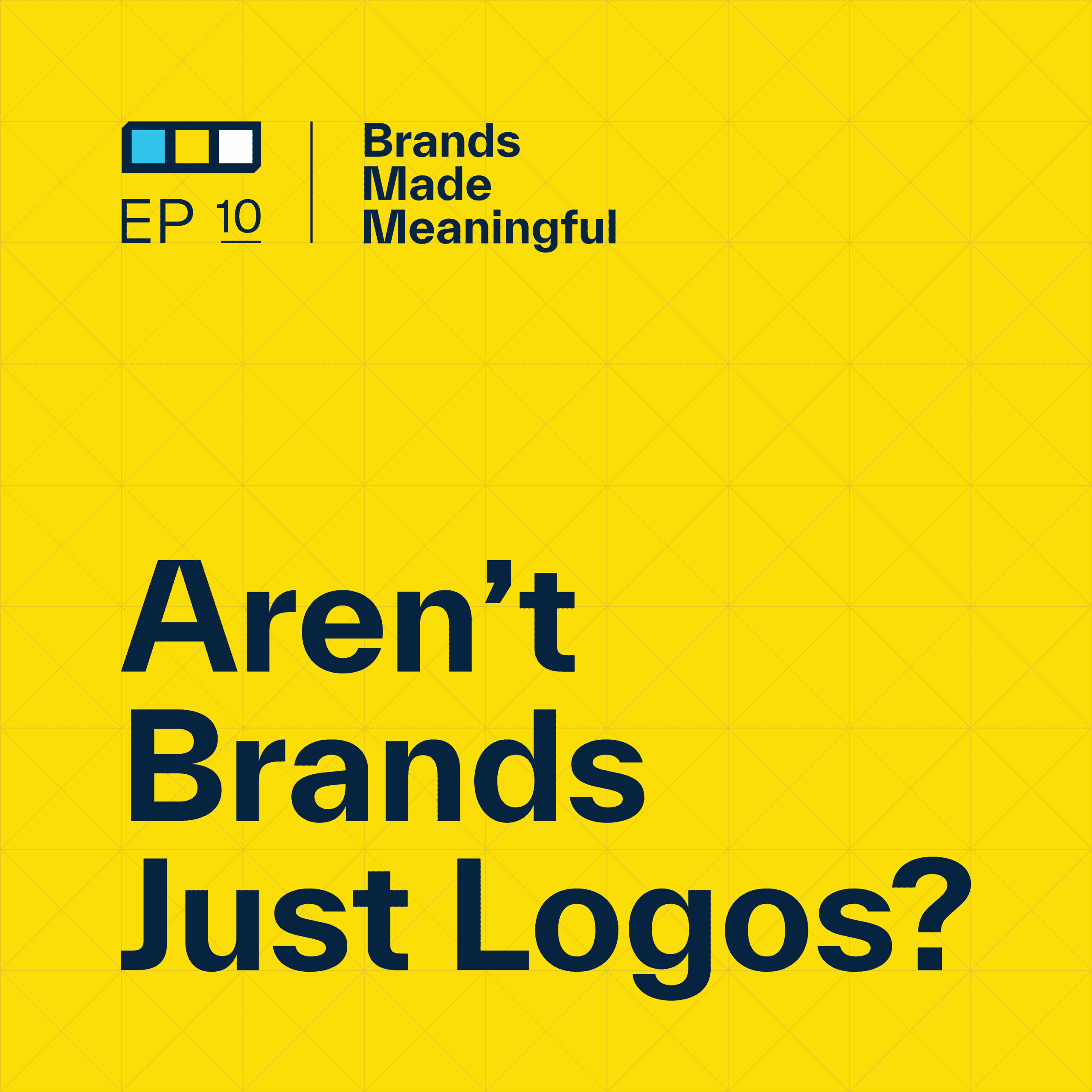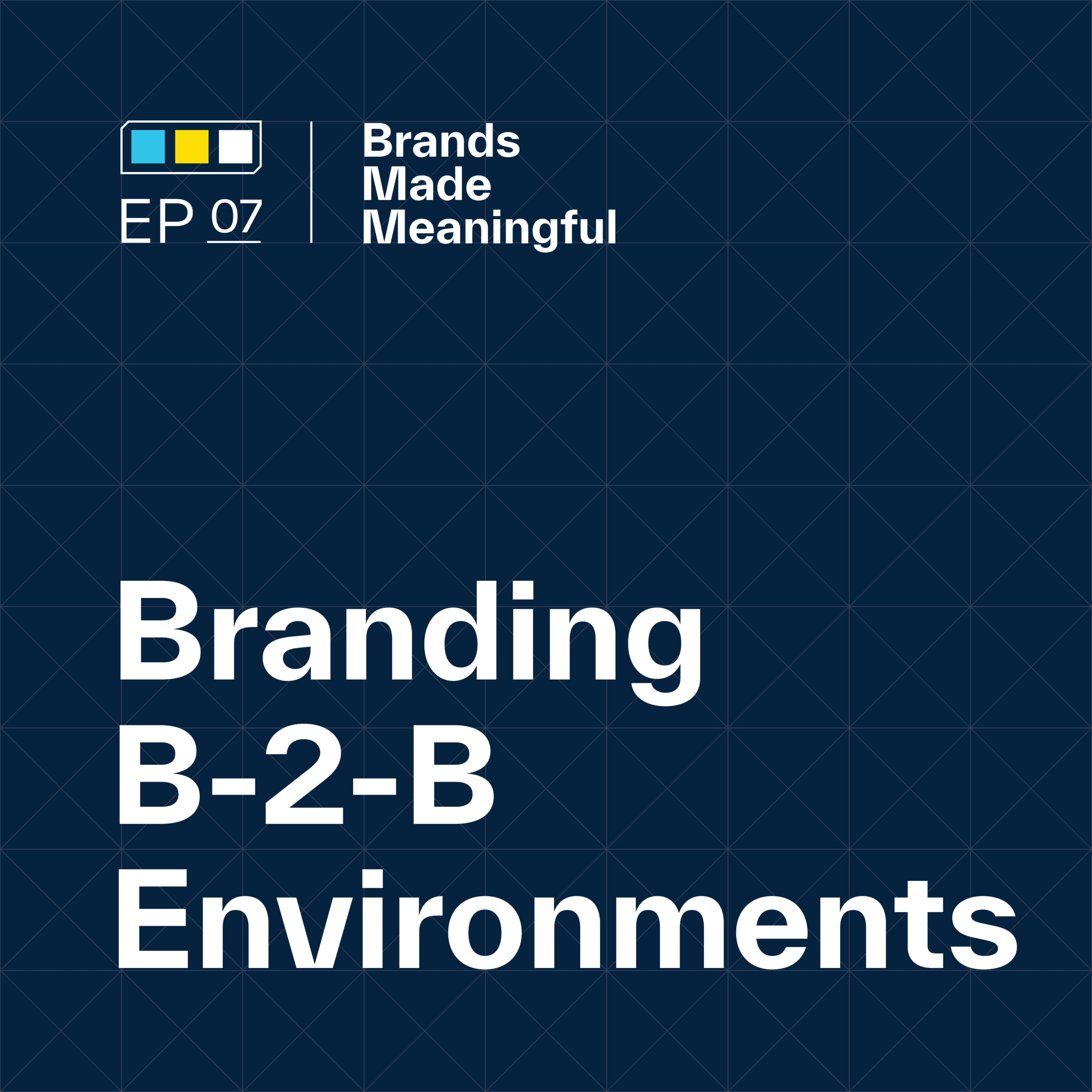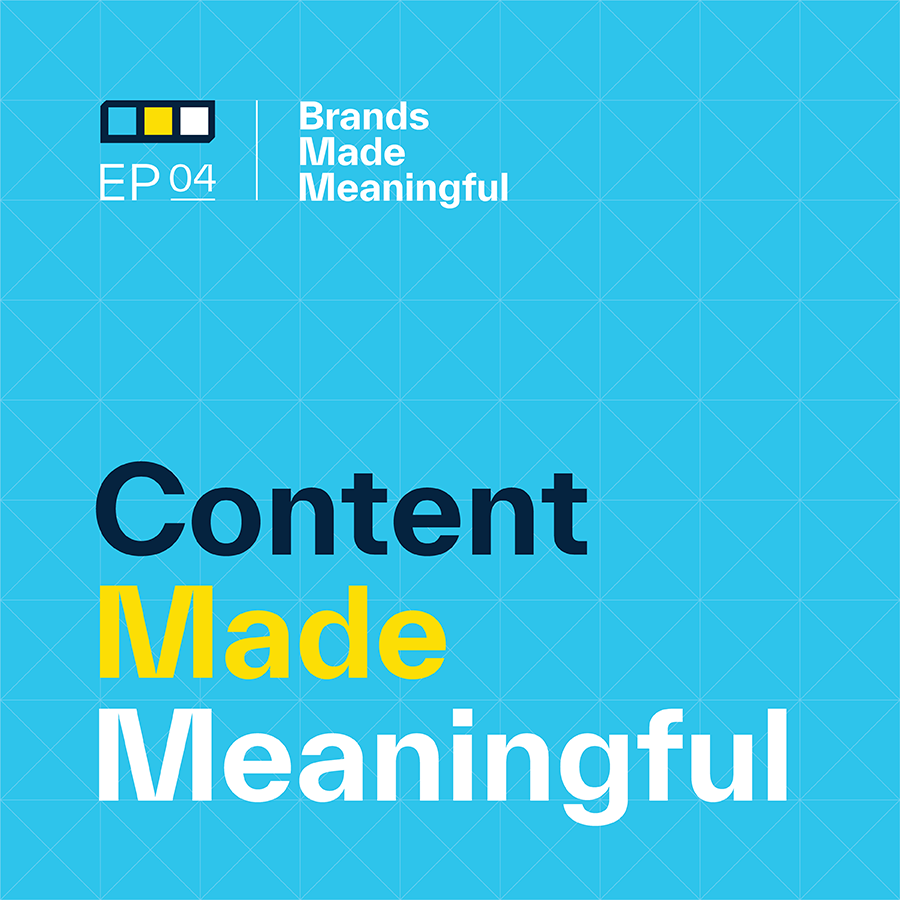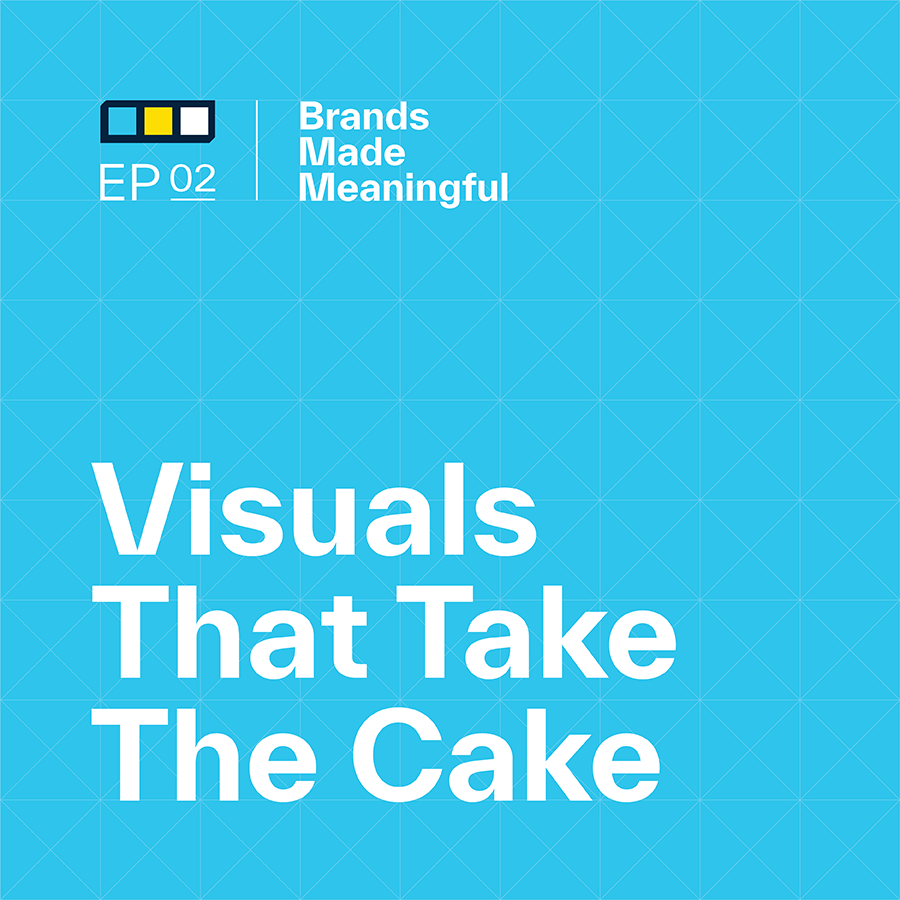EPISODE 31

Levels of Executing a Brand Refresh
Episode 31
If you have a brand strategy in place, how do you execute it?
EPISODE TRANSCRIPTION
We’re talking about execution of strategy or killing strategy. In a good way, though.
Derek Crushing strategy.
Expand Full Transcript
Tucker What we’re talking about today is really understanding if you have a brand strategy in place, how do you execute it? In what ways do we start looking at things once we have the strategy all setup, looking at the brand as it is today? How do we move forward? In what ways do we advise our clients to utilize that in the best way? And then how we move people into the future is really the topic.
Derek Most of the work that we do is for companies that have a brand. It’s not very often that we’re working for a startup. What I mean by that is there’s an existing strategy in place, there are existing brand elements in place, and there is story in place. It may or may not all be the right story for where that brand is going to go, but there’s equity, there’s goodwill, and there’s something in place. We’re not starting from scratch. But a lot of times when people come to us, or before they come to us, they assume that whatever they ask for us is going to result in us throwing away everything they have and starting over. But that’s not the case.
Tucker Not the way we look at it at all. I think the perspective that we bring to the table is your business has been in, I don’t know, five, ten, 15 years of a successful run. It’s still alive, it’s still kicking, it’s still doing that. It just needs a little bit of energy to keep it going or to re-energize the marketplace, the audience, and the opportunities. So when we look at that, the first thing we think about is what assets are in place that make it successful. In what ways can we take what’s currently there and make it a little bit better? But you don’t do that without a strategy in place. So our first step is to always do a discovery session – to go, Okay, what’s the problem here? What are we doing to break all that down, to understand the audience, to understand the direction the company wants to go? And then we build out a strategy to say, Okay, what’s the best solution for us? What do we want to be in this marketplace? How do we want to talk to people? How do we want to interact? How do we want to be seen? And then once we’re positioned in our minds the correct way, then we go, What does that look like?
Derek I think some clients grasp that and they totally get that. There’s something in the strategy, in the foundation, maybe the guiding principles, maybe even the vision of the company or the target audience that’s changed or off, and they totally get that when they’re coming in for some sort of branding initiative that that’s the focus. But we also have clients that go right to that execution part and say, I have a branding problem, I need a better tagline. Or, I need a new logo. And maybe they do. But as we keep talking in these podcast conversations, the logo, the tagline, those are just components.
Tucker Those are vehicles to showcase the strategy behind it. The goal is to communicate our strategy. If we have a great logo, the goal is to communicate our strategy. How are we being seen? In what ways do we want to be seen? We’re talking about execution today. The table stakes for this conversation is that you have a strategy that you really like and that you’re really excited about and now you’re going forward with it. In a different conversation, we can talk about that strategy. But if we’re saying that your brand’s strategy is in a really great spot and you are excited about the way you’re going, then we go, Okay, how do we execute upon that? In what ways do we start looking at this? Internally here we have a kind of three-part conversation that we have with our designers and writers – it’s refine, refresh, redo. We say, Okay, now that we have a strategy in place, let’s look at all of these assets. Let’s say that’s the logo or the tagline, or maybe it’s audience messaging. We look at it and go, Okay, does this need to be refined, refreshed, or redone? Then we go back and say, Now we have a plan of action. We have priorities on the table and we know what to attack first.
Derek We’ll have clients just flat-out say, I’m having a branding problem. I’d like to talk to you guys. Does that mean I need a new logo? And the unfortunate answer is, I don’t know yet. Because we haven’t dug in, I don’t have an understanding of who you are, who your audience is, and what you’re trying to do. And once we get clarity on some of these core strategic pieces, then we can evaluate what you look like, what you sound like, and how that compares to your competitors, and then make a much more knowledgeable recommendation.
Tucker We were at lunch with a prospective client last week and he said, Do you like my logo? And my answer was, I don’t know what your strategy is. Who is your audience? What are you going after? In what ways do you want that logo to convey that? It’s really hard, and I think that we do a good job of trying to take out the personal preference because most of the time we’re not the audience. You’re not speaking to creative agencies normally with your brand. We do have actually a few clients that do speak to creative agencies, which makes it a little easier because we are the target market. We can be a little biased. But when you’re looking at your logo, and I would suggest this for other people too, is to go back and say, Well, do you like it or is it successful for your audience? Do you like it or is it successful based on how you want to be perceived? And I think that there are a bunch of ways you can look at brand branding and be very subjective and not objective with how you pick and piece all of these things together.
Derek And if you become too subjective, you might end up changing something for the wrong reasons. You might subjectively say, I would like something different because I would like a look or a style that’s more appealing to me. But if you’re not the target market or the customer or the buyer, then you’re changing things for cosmetic reasons because you like to wear your logo, which I totally understand, but you’re disregarding some key components that will help. Ultimately that logo, which is just that piece that symbolizes all the things that come around it and that surround it and are behind it, will make it a successful branding initiative.
Tucker When we work with some larger companies and they get a new CMO or they get a new CEO, some things that are maybe not red flags, but they definitely cause a little bit of concern, is when new leadership comes in and they say, All right, we’re going to scrap everything. We’re just going to start from ground one. And that’s concerning when we see successful brands that have worked really hard on what they have today and new leadership wants to own that. They want to put their mark on the company. And I think that great leaders that we’ve worked with have said, It’s not my job to own this. This brand isn’t even for me. My job is to move this company forward in the way that I feel is best. What you’re saying to me is we don’t need to change things for the sake of changing things. We don’t need to change things because I wasn’t a part of that process at the beginning. We need to change things for the right reasons. And if the right reasons are to have a better strategy, you always start with, Let’s refine our strategy. Or, Let’s look at the strategy first before we start picking apart a logo, or we start picking apart the colors that we use.
Derek An example of that, of a couple of brands that we’ve worked with in the sporting goods industry, comes to mind. One of them is Shock Doctor. People often think of them as the mouthguard company because that’s their main product line. You go into Dick’s Sporting Goods and see a wall of mouthguards from Shock Doctor. A handful of years back, the company that owned Shock Doctor bought a competitive sporting goods company called McDavid. And we had been working with McDavid and they brought us in to say, what’s the relationship? What’s the brand relationship now between Shock Doctor and McDavid and should we change our brand, our colors, our logo? What does that mean? What does that look like? And so it sparked some really thoughtful strategic conversations around what is Shock Doctor. Who’s the audience? How do they differ from McDavid? And the end goal was to help them understand what the relationship was between two companies that used to be direct competitors and now became siblings or cousins. I’m not quite sure what the familial definition ultimately is, but for them to now come along side by side. And that led to the strategy conversation specifically for Shock Doctor to determine who they are, who their audience is, and what was the perception and personality and reputation for their brand that they were looking to solidify and grow in the sporting goods market.
Tucker When I think of our goals internally, when we work with our clients, our goal is to always help them move into the future. It’s to say, Where do you want to be in ten years? How do we get you there? Where do you want to be in five years? And how do we help you get there as well? And when we think of those 5-10 year marks, the change doesn’t happen immediately. And we’re always aware of the costs that come with changing your brand, the investments that have to happen when you’re looking at making large-scale changes or even small-scale changes. Even the smallest thing for someone like a manufacturer can make a big difference within their molds and all these other things. So we’re very aware of the investment. Not only do you put into us for our time, but the investment that you’re putting into the materials that need to be created for that or any of the other pieces. When we’re looking at a brand, the evolution of it can take years because your brand might be great today, but it might need to be refined for the future. I think a really good example is a project that we’re working on with the Minnesota Vikings about their brand which might not need to change a lot from where it is today. But what we’re starting to pick at is how we refine that strategy so that we’re seen the way we want to be seen, and how we inspire people internally to make decisions that will evolve us over time. So not all brand changes, or especially brand strategy changes, come in the form of overhauling your visuals or overhauling all your messaging or some of those tactical things that we think of. Sometimes it just comes with a change in mindset to say we might have the exact same assets at play right now, but we’re changing our mindset today and we’re going to start making brand decisions as we go, whether it’s campaign based or whether that’s resource allocation based. We’re going to start figuring out the ways that we want to evolve over the next five years rather than saying we’re going to change everything and keep moving forward in a completely new direction.
Derek In the three approaches of refine, refresh, redo, it’s almost hard for me to put the Vikings into one of those. From a cosmetics standpoint, it probably goes in the refinement because I don’t think anybody’s going to visually see any dramatic, if any, visual changes to their brand, their logo, their color palette, etc. Maybe some language over the next couple of years potentially. But all of their work, which is in some cases a more substantial amount of work and focus and energy, than the time that goes into redesigning a visual asset like a logo or a creative campaign of some sort. But for them, what they needed wasn’t cosmetic. It wasn’t a visual execution. It was that internal alignment on their ten-year target goal.
Tucker Who are we? Who do we want to be and where do we want to take our audience?
Derek And then to step back and say, Okay, if in ten years, this is what our goal is, what do we need to be doing three years from now that’s going to be helping us get to that point? And what can we do in the immediate now to help us work towards that three and to work backward that way?
Tucker It’s a really good point when you say a lot of clients come to us and they go, Okay, so I’m going to work with a creative agency or a branding agency or a design agency and that means everything’s off the table. And I hate that that’s the way it feels because people don’t like that there’s a critique of what we are doing now. But the first thing that we look at is, if you don’t have a strategy, you need to make a strategy and then feel what’s right. Even the larger companies we work with don’t have a strategy. They just were, you know, organically created. And that’s totally fine. When we get into companies who are in their second stage, or they’re moving into their third stage – and if you don’t know the stages, we have a conversation about that somewhere – the company is starting to mature a little bit and is getting out of that startup role and starting to really grow in ways that they are seen not even as local but on a more regional and national scale, their brand doesn’t necessarily get created initially via strategy. It’s created because that’s all you had at the time. You might have hired a freelance designer to just throw something together for you, or you said, I just need to be in a really cool look. Let’s just go for it. I have a hockey company that has this, and I’m just going to throw a B at it and just kind of stylize it and keep moving forward. But when we get into these larger growth opportunities, a strategy can really help you not even think about it externally, but the internal side which is that mindset that we’re taking forward to understand who we are. And as we hire people, it makes it easier for them to understand this is who you are now as we’re working forward. And now you can inspire them to make better decisions as they have customer service in their mindset or they have sales in their mindset or even as they’re looking at product development. And those can really make a difference for a company as it goes forward, not only because they’re making the right decisions but because they’re making decisions faster because they have the tools at their fingertips to say, Okay, here is what is really important for us as we move forward because we have a strategy in place. And I think that that’s something that gets missed a lot within those growing companies.
Derek We keep saying ten years, we keep saying decade. And I think that that’s a key ballpark time frame for several reasons. One, it’s because when people are planning, when a business starts, a ten-year target in EOS terms is a long time for a business. And it’s an eternity for a small business to look that far ahead and try to see what that looks like when it’s a great aspirational benchmark when you’re planning and articulating and crafting your vision and your mission and what it is that you’re working towards. Because it’s that stretch timeframe. It’s a really, really critical key amount of time to let you stretch out and stretch your goals and see what it could be. But it’s also a long time. If somebody creates a brand in their start-up, ten years is a long time in terms of visual trends and what the industry is doing. In ten years, the target market can absolutely change. And I’m kind of jumping into some of the red flags, but you’ll hear us say, How often should I reanalyze my brand? How often should I step back and look and determine if my brand is still appropriate, if it’s still effective? And ten years is a really good guideline.
Tucker When you say visual changes, in a decade the expectation for consumers completely shifts. But I’m not talking about setting your visual direction for the next ten years. That’s not it at all. It’s how we want to be seen. And in what ways is that going to be impactful for our audience? That can evolve with the trends to say, Every year we look at our brand strategy – are we executing on that? And in what ways are new trends actually going to help us? And in what trends should we stay away from because those are not in the direction that we want to go as a brand? And I think that that makes it easier to say, No, we’re not talking about the assets, the tactics, the logos, the colors, the style of all this stuff. We’re talking about the strategy. So back up for a second and really list how you want to be seen. What is your position in the marketplace? I would say look at that every year and understand how to refine what we currently have to get there. It’s not always to redo your logo. That’s not always the answer. But as you evolve as a business and your strategy evolves as you keep moving forward, if you are looking at that every year, just like you would look at your marketing plan every year, or you look at the way that you want to re-layout HR or something like that where you’re looking at something on a yearly basis, I’d come back to this strategy every year and say, Are we executing on that the way we thought we could? And you’d be surprised by the small changes you can make that make a big impact on how you evolve as a company moving forward.
Derek I think many businesses, many leaders, have an annual strategy, have an annual strategic session planning. Well, maybe I’m taking it for granted to say that every business sits down every year and looks at what their brand strategy is, looks at where they’re going, what needs to evolve, and what’s changing this year. Maybe I want that everybody’s doing that responsibly every year. But I also get that we get caught up in, you know, the waves of business and…
Tucker Tasks and so many things that need to be done every year.
Derek Doing the stuff, doing the work, and getting tax forms turned in on time. Actually, you’re making sure you’re leading the people that need to be led and not step back from time to time or at least once a year and say, Does this still make sense?
Tucker It’s also hard for some people to own that strategy, to say, I built the strategy and after a year we’re not executing it. That’s on me. Sometimes that’s a really hard pill to swallow. At a lot of the organizations we work with, there is one person that’s in charge of that and that’s their job. The conversation is hard. This is not an easy thing. I think that a lot of people look at it and they go, Oh, you’re just going to tweak some visuals and keep moving forward. That’s not it at all. You’re trying to stay ahead of trends. You’re trying to make sure that you’re not being sucked in by other trends. You’re trying to stay authentic while still being surprising. That’s a really hard thing to do, and branding is not an easy task by any means. It’s really complex. It’s super emotional-based. How do you still convey emotion without getting too squishy, as we call it? And if we keep moving forward with a good strategy, I think that that can help people at least have clarity. We always say that it’s better good done than perfect, never finished. So if you’re never going to finish that strategy because you’re just going to keep sitting there picking at it, then it’s not going to be good. But if you have a good enough strategy and you’re going to have great execution on it, then you’re going to have success as you move forward. So let’s talk a little bit about some red flags. In what ways do we see people having the problem of why they should really be looking at the way they execute their strategy? So one that really comes out to me is that they have grown, they’ve evolved. They’ve been in business for ten years, or they’ve been in business for 20 years. They’ve evolved from who they were and they probably need to update their positioning or update the way that they want to be seen in the world. But what are some other things that can really impact?
Derek Your audience changed. Working with McDavid, they literally pivoted from targeting 30-year-old athletes to 15-year-old athletes. And what those two audiences need or look for from that company is completely different. In working with the Vikings right now, we know that top of mind for them is the next generation of fans who consume their product. As fans that looks completely different from what the baby boomer generation looked like, or Gen X, or whatever. Their audience is evolving and they need to respond and react to that.
Tucker I think another one that happens is people get stuck in leadership debates or there’s a little bit of internal politics that happen where things can’t change because someone doesn’t want them to change. We’ve worked with brands before where the CEO just likes it the way it is. Don’t worry about it. And that has caused them to be out of date for years afterward. And there’s a lot of work that needs to be done. So I think being really open and honest about the way that you critique it internally can be a really helpful thing, but it can also be a red flag if no one’s talking about it. If no one talks about some of the challenges that you’re up against as a brand, then that can make it really hard for you to make any kind of change. The last one that we talked about was just the misperception. When you start talking to your audience, to your customers, or maybe even your fans, in some cases they don’t understand who you are. They don’t really get what you’re trying to be. Or maybe they think of you as what you used to be. And that can really be a red flag for a lot of companies to go, Okay, we need to look at the way we show up or the strategy which we want to have in place. Because if you’re being misperceived in your channels, then that’s a really difficult thing to come back from. If you set a certain precedent for 20 years and you’re trying to change, it makes it really hard.
Derek We find it often where a client will say to us, If I could just sell all of these products that we currently sell to our customers who are buying this other product from us because they don’t know that we also do this, we wouldn’t even need to work on brand awareness. We would do great just by servicing the existing customers that we have. It’s a very tactical misperception in being misunderstood about who you are and what you stand for. It also can get granular and confusing about literally what your products and services are and what you’re offering. How do you do it?
Tucker I think people disregard some of those clarity points to say, No, they get it. And it’s not always how it works. So how do they solve the problem? And we’ll just touch on this. But we always start with the strategy. When someone goes, Well, what do you think of our logo? It’d be like, Well, show me your strategy. What are you going after? What’s your goal here? What have you tried to achieve with that? That can be a real eye-opener for a lot of people. Always start with your strategy. If you don’t have a strategy in place, try to at least pick apart some. There are ways that you can have very robust brand strategies and there are ways that you can even just start working on it piece by piece. You don’t have to bite off the whole billion-dollar company brand strategy to get at least some kind of clarity and some kind of direction within your brand.
Derek That’s the word meaningful. The name of the podcast is Brands Made Meaningful. That’s what meaningful means. It’s what you said earlier in our effort to go for purpose over preference for being strategic instead of just cosmetic or visual. You can look cool all day, but if it’s not rooted in anything meaningful or purposeful, it’s not going to last, or at least not for very long.
Tucker And you’re just not going to have as much impact when you say, Here’s who we are and this is why it matters. The who we are and why it matters have got to be authentic. And if it’s not authentic, then you’re really going to struggle. So start with the strategy every time. And like I said, even if it’s small, start with a small strategy and move forward. There’s always a way you can build it up as you go. The second one is to confirm your audience, and I would say that could be called confirm with your audience as well. Sometimes your audience changes altogether. Like the conversation with McDavid, they totally switched from one generation to a completely different generation and say, We’re going after a different target market. The other thing is to say, does your target market still resonate with you or do you still resonate with them? And to go, how are we seen by the people that we think see us every day? Just doing some kind of consumer insights can really help you understand where you’re at, and where the health of your brand is. And if you do have a strategy in place, is that strategy being executed properly? Your customers will tell you right away. What do you think of us? What was our service like? How how do our products feel when you work with them? And I think that there’s a lot that you can learn from some really simple conversations with customers.
Derek We talk all the time about how important it is when you know who your customers are to understand what they want and expect from you. But a lot of times I think we just assume or make our own assumptions based on our former customers in knowing what they want. But especially in the case of McDavid or the Vikings, they needed to go find that data so that they really truly asked those customers so that now they know what they want and what they expect.
Tucker The last one that we talked about is you say, Take stock. I’m thinking of it as understanding the lay of the land, understanding what’s going on. If you’re really aware, that’ll go a long way toward you making smarter decisions. We say, Know who you are, know your competitors, know who’s in the landscape. If you haven’t looked at it in 3 to 4 years, there are probably new competitors out there that you’re not aware of. Look at those opportunities. Look at the way that other people are talking. Look at the way that other people look and be aware of trends, but not to follow them, but just to be aware of them. I think that when people say, Keep your head on a swivel because then you won’t get knocked out, that’s exactly how I see it too. We have to be aware of everything that’s around us so that we’re just smarter people. It doesn’t necessarily mean we have to change anything today, but it makes us better at what we do when we know what else is going on.
Derek And this brings us back to that answer. When we’re asked upfront by a new client that says, If we do this whole branding initiative, does that mean you’re going to have to redesign my logo? This is where we would say, Here’s our recommendation. Now that we know what the strategy is, and we have clarity on who your audience is, we understand who the competition is and what that landscape looks like. We’ve gathered all that awareness. This is where we can now hold up, what your current image is, look, voice, what those assets are and say, Now what’s working, what stands out, what’s cutting through, and what needs to be reassessed.
Tucker One of the activities that we do with our clients that most think is really impactful for them to gain clarity is after our discovery and strategy process, we do a SWOT analysis. We do a brand SWOT analysis so we understand the strengths, weaknesses, opportunities, and threats of a brand. In what ways do we see our opportunities? In what ways are we really great and in what ways can we be better? And that activity using the strategy, using the understanding of the marketplace, understanding who we are, who we want to be, and then being really honest with ourselves, can help provide you with, All right, now let’s create a priority list. Now that we know who we are and who we need to be, let’s create a priority list of what’s the most impactful. And I wouldn’t put the priority list in how much it’s going to take to invest into it but start with priorities on what we are going to get out of it. How much impact are we going to create with something like that? And then you’ll find that it’s a lot easier to make those kind of decisions.
Derek And I would do that every year. I would do a brand sWOT along with your review of your strategy because they go hand in hand on an annual basis. And I think that that will inform you greatly as to what you should prioritize and what’s going to be the most helpful for you, not only in the short term, but to help you work towards that ten-year goal.
Tucker So that’s our conversation today.
Derek If you think of another topic, if there’s something top of mind, if there’s a concern, a branding issue, or a problem that you would like us to talk about, shoot us a message and let us know. We would be happy to add it to the queue.
Tucker Absolutely. Or just talk to you about it.
Derek Or just give us a call.
Tucker Have a good one.
Derek Till next time. Sussner is a branding firm specializing in helping companies make a meaningful mark, guiding marketing leaders who are working to make their brand communicate better, stand out and engage audiences to grow their business. For more on Sussner, visit Sussner.com.
More Episodes Like This
Building Brand GuidelinesEpisode 65
Derek and Tucker show us how to build infrastructure guidelines to unify your brand experience across the board.
Club Identity SystemsEpisode 64
Derek and Tucker cover what Identity Systems entail and how to discern between internal and external methodologies.
Navigating Branding With a BoardEpisode 63
Derek and Tucker bring clarity to uniting your company under one cohesive vision.
Putting a Committee TogetherEpisode 62
Derek and Tucker assemble your need-to-know facts when putting together your committee.
The Guiding Principles of Private ClubsEpisode 61
Derek and Tucker go over the top ways private clubs can find the balance between pleasing old members while attracting new ones, all while making moves towards the future.
How Color Affects PerceptionEpisode 60
Derek and Tucker cover how to best convey your business with color.
Brand EcosystemsEpisode 59
Derek and Tucker break down how to craft effortless experiences when considering your brand as a whole.
6 Types of Brand TransformationEpisode 58
Derek and Tucker dive into 6 distinct types of transformations for a wide range of brands.
Tournament Branding For ClubsEpisode 57
Derek and Tucker discuss designing and delighting your club members with tailored events.
Brand Promoters & DetractorsEpisode 56
Derek and Tucker discuss how high level promoters increase your NPS and how to turn the tides on your detractors.
The Loudest Voices in the RoomEpisode 55
Derek and Tucker talk about gathering feedback while prioritizing every voice.
Determining A Primary AudienceEpisode 54
Derek and Tucker discuss if and when you should be honing in on your audience vs. casting as wide a net as possible.
Branding For ExclusivityEpisode 53
Derek and Tucker discuss the intricate process of naming your brand.
Measuring Brand SuccessEpisode 52
Derek and Tucker discuss how we measure our success in branding and a few key KPIs that help us understand our impact.
Branding For ExclusivityEpisode 51
Derek and Tucker breakdown how brands can create the perception that they are exclusive and only for a certain type of consumer.
What Makes A Brand SurprisingEpisode 50
Derek and Tucker break down the Sussner formula that we believe leads to a surprising brand.
Breathe Life Into Brand TraditionEpisode 49
Derek and Tucker discuss the intricacies and common pitfalls of branding for Private Golf Clubs.
They Key of Visual DifferentiationEpisode 48
Derek and Tucker break down the importance of differentiating your brand on a visual level.
Branding For Private GolfEpisode 47
Derek and Tucker discuss the intricacies and common pitfalls of branding for Private Golf Clubs.
Dealing With An Identity CrisisEpisode 46
Derek and Tucker breakdown how to identify and remedy a brand's identity crisis throughout thoughtful and intentional brand management.
Branding vs MarketingEpisode 45
Derek and Tucker discuss the differences between Branding and Marketing and how to make the two compliment each other.
Build Your Brand's FoundationEpisode 44
A brand's foundation is a critical element in being successful in the long-term.
Building a Constructive Branding ProcessEpisode 43
Derek and Tucker break down the steps required to build the most constructive and meaningful branding process.
What Makes a Brand Relevant?Episode 42
Relevance is a key piece of a brand's identity for creating clarity and connection.
Your Right to WinEpisode 41
Derek and Tucker discuss the “Right to Win” and the odds of your brand's success within your target market.
An Intro to Sub BrandingEpisode 40
Derek and Tucker discuss the nuances of developing sub-branding and strategies.
Conquer Branding FearsEpisode 39
Derek and Tucker dive into how to overcome the fear of change and the nature of constant refinement of your brand.
Balancing Strategy & DesignEpisode 38
Great strategy is a necessary foundation for great design—and great design brings great strategy to life.
Branding PrioritiesEpisode 37
Branding priorities are the actions and initiatives that shape or enhance a brand's identity, perception, and market position.
Invest in Your BrandEpisode 36
Investing in your brand benefits your company as a competitor in the marketplace, builds trust with customers, increases perception of quality, and drives employee engagement.
Why is Positioning Scary?Episode 35
Narrowing the brand's position is really a strategic decision to focus the brand's offerings, messaging and target audience on a specific niche or segment within the market.
What Are Brand Consultants?Episode 34
Derek and Tucker discuss the importance of hiring expertise with a wider breadth of knowledge than just visuals.
Hire for Brand FitEpisode 33
Hiring people that fit your brand is key in order to maintain brand authenticity, positive culture, and consistent messaging.
Your Brand’s Stance MattersEpisode 32
Your stance can help define your brand from a core level and make branding, hiring, and marketing not only easier, but more meaningful.
Levels of Executing a Brand RefreshEpisode 31
If you have a brand strategy in place, how do you execute it?
The Role of Features & BenefitsEpisode 30
Derek and Tucker discuss the importance of features and benefits within the context of branding, selling, and marketing your products and services.
Should You Listen To or Lead Your Customers?Episode 29
Within the challenge of any rebrand is the challenge of managing customers' perception of change.
Managing a Brand TransformationEpisode 28
Episode 28 discusses the highlights and challenges of rolling out a new brand, both internally and externally.
Living Your BrandEpisode 27
Your brand is not this shiny trophy on the shelf. It is something that you are molding every single day.
What Makes a Brand Authentic?Episode 26
Season 2 starts off with a discussion about building authentic brand experiences, both internally and externally.
Reviewing your Competition's CreativeEpisode 25
Derek and Tucker discuss the process of reviewing your competitors' creative strategy to better position your brand within the market.
Interviewing your Audience for InsightsEpisode 24
This episode details the process and benefits of interviewing your audience as part of the branding process.
Assumption ReversalEpisode 23
Derek and Tucker discuss how we change our thoughts and get into a different mindset to refine and revise our branding.
Developing vs. Amplifying a BrandEpisode 22
Another way to say it is, development is building and crafting your brand story, and amplification is then telling it.
Refreshing a Sporting Goods BrandEpisode 21
This episode shares the steps behind Sussner’s work in refining the Shock Doctor brand.
Defining PerceptionEpisode 20
Derek and Tucker discuss the positive and negative impacts of brand perception.
What is a Brand?Episode 19
Derek and Tucker discuss what defines a brand and what makes them successful.
Branding Golf Courses vs Golf ClubsEpisode 18
Derek and Tucker further hone in on golf course design.
Refreshing a Golf CourseEpisode 17
Derek and Tucker discuss the bar for golf course design – and how to push past it.
Let’s Talk Taglines Episode 16
Derek and Tucker talk taglines in today's episode.
Refreshing an Athletic DepartmentEpisode 15
Derek and Tucker sit down today to discuss what logos mean within branding.
Branding a Club Episode 14
Derek and Tucker discuss how to brainstorm branding a club.
An Intro to Internal Branding Episode 13
Derek and Tucker discuss the power behind internal branding.
The Value of Stereotyping Episode 12
Derek and Tucker sit down today to discuss the meaning of stereotyping within the branding world.
We’re on a Mission Episode 11
This episode digs into the rallying cry for the greatness your team is going to accomplish.
Aren’t Brands Just Logos? Episode 10
Derek and Tucker sit down today to discuss what logos mean within branding.
The Business You Are Really In Episode 09
Derek and Tucker sit down today to discuss how to discover what business you are really in to better understand your mission statement.
Clarity of Vision Episode 08
Derek and Tucker discuss the importance of looking ahead towards the big picture to better hone the purpose behind what we do in the now.
Branding B-2-B Environments Episode 07
Derek and Tucker discuss the Branding of Spaces.
It’s All in the Name Episode 06
Derek and Tucker discuss what a name can say - and not - about your company.
Delving Into Branding Data Episode 05
Derek and Tucker jump into the discovery phase of branding before it hits the drawing board.
Content Made Meaningful Episode 04
Today Derek and Tucker discuss the concepts within content and its common misconceptions such as the phrase "Content is King."
Brand Story vs. Brand Messaging Episode 03
Your story matters.
Visuals That Take The Cake Episode 02
Derek and Tucker sit down to discuss visual impact and what that could mean for your brand.
Are You Different or Distinct? Episode 01
It's not about being the only option, it's about being the right option. Join Derek and Tucker as they discuss Differentiation & Distinction.



